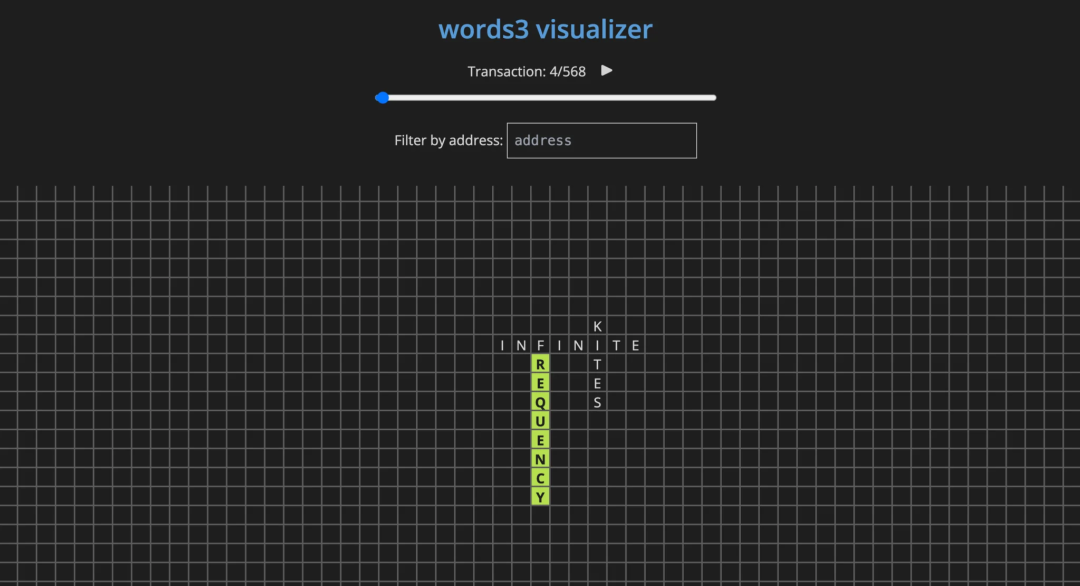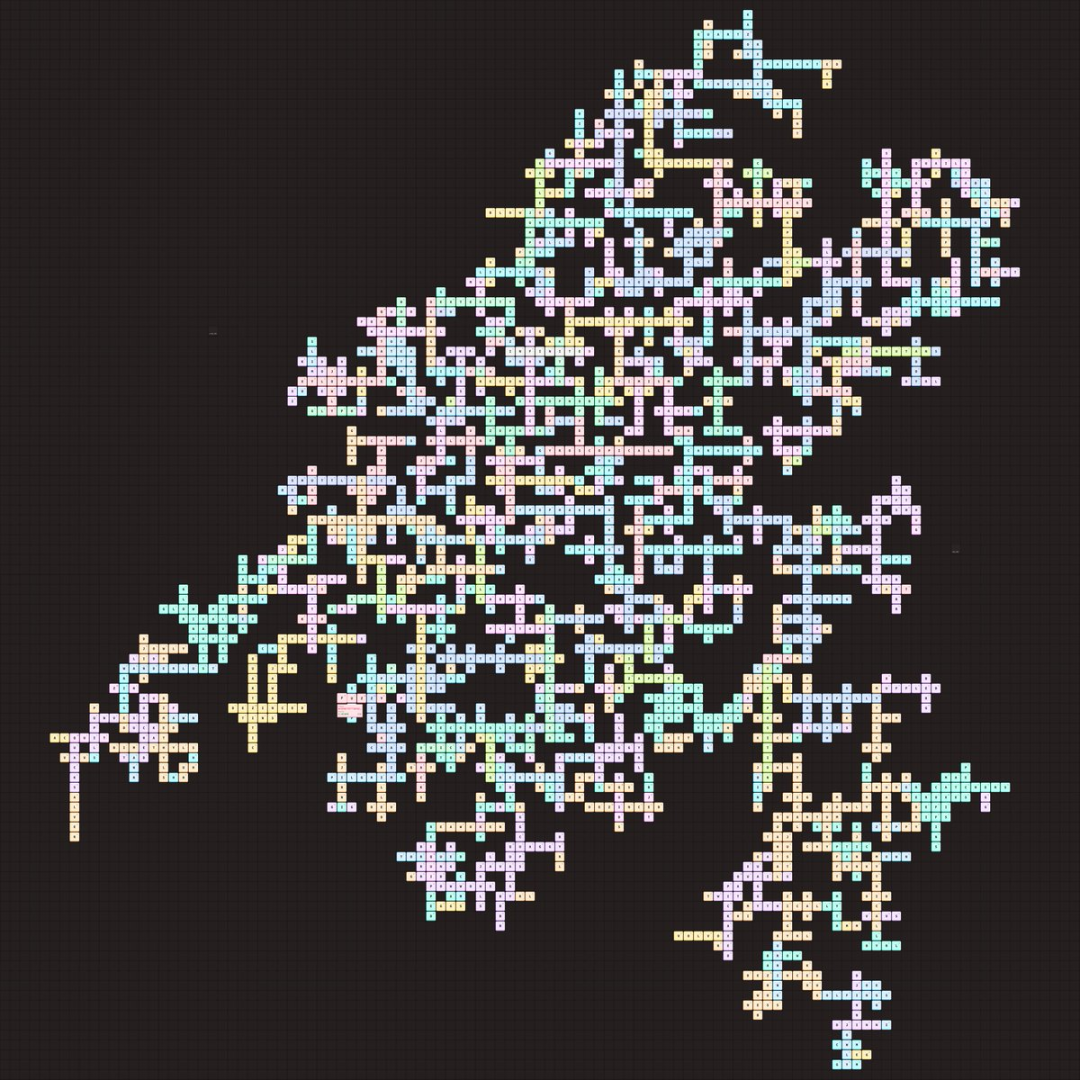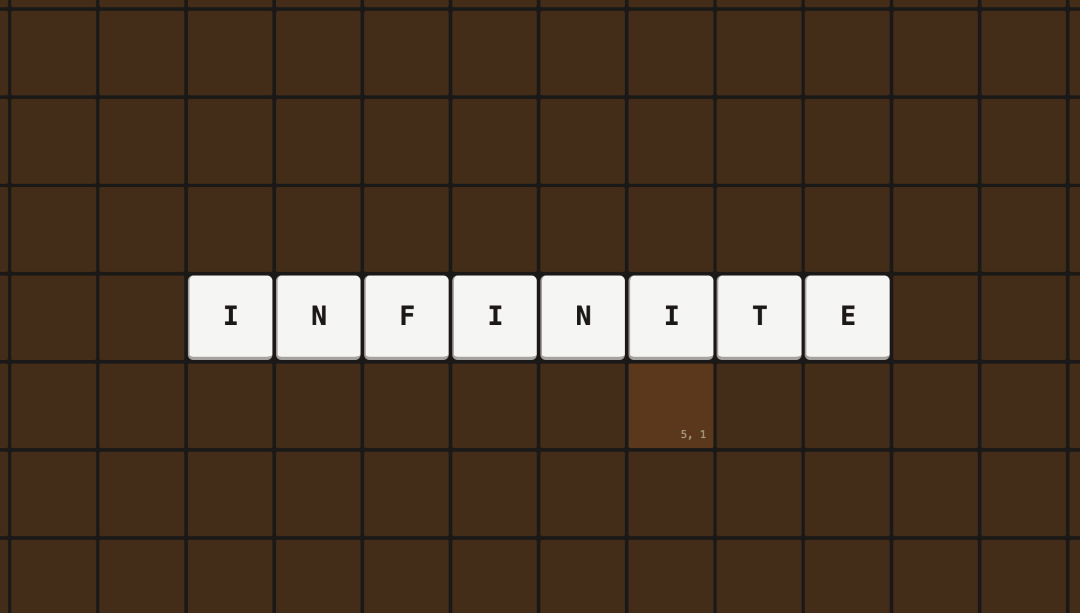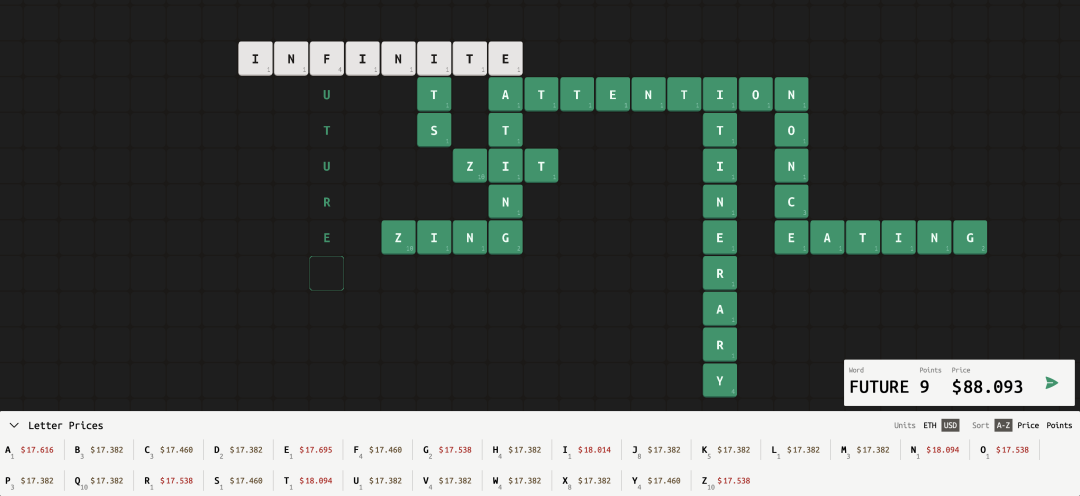Introduction to Words3, the Full-Chain Game: A Word Chain Game Developed Based on MUD.
Introducing Words3, a word chain game developed using MUD technology.Words3 is a fully on-chain game based on MUD development. The game was first launched in November last year. However, after the first test, Words3 was not publicly tested for a long time. It is rumored that the team is currently remaking the game based on MUD V2, which was still in development at the time.
From the following link, you can still browse the complete process of word filling by players during the last Words3 game event: https://words3-visualizer.vercel.app/

Currently, Small Brain Games, the development team behind Words3, has officially announced that a new round of testing activities will begin on July 8th. Therefore, we have summarized the basic rules of the game based on the official Wiki of Words3 and other information. Readers interested in the testing activities can also enter the official Discord to obtain detailed information about the testing: https://discord.gg/ZeJfTjyP
- Arbitrum and the Dawn of a New Era: Exploring Ethereum’s Cancun Upgrade and the Future of $ARB
- Founder of Folius Ventures: 8 Insights on the Development of the Cryptocurrency Field
- LD Capital: Summary of NFT Lending Platform Updates
01. Introduction to Words3
Words3 is an on-chain PvP word-filling game based on Optimism (this test will be conducted on the test network), and the player’s goal is to profit by filling in words. In the game, players use any letters on the grid to fill in words and earn points. Each letter used by the player has a price that is constantly adjusted according to supply and demand.

At the end of the game, the player’s profit will depend on two parts: 1. The score the player gets; 2. Whether other players fill in new words based on your words;
02. Detailed rules
The grid used for word filling can be infinitely extended.
At the beginning of the game, there is only one initial word on the grid: “infinite”.

Anyone can place letters on the grid to form words
The newly filled word by the player must be based on the existing word or letter on the grid, and each word (including intersecting words) must be valid. The system will verify whether the word filled by the player exists in the dictionary based on the MercleProof. All letters can be used at any time during the game.
Each letter has a constantly changing price
The price of each letter will be dynamically adjusted based on the VRGDA algorithm according to supply and demand, and the price paid by each player is the sum of the prices of all the letters they place.

Players score points based on the words they create
Each letter in a valid word created by a player counts towards their score (even if those letters are already part of existing words), and each letter has a different point value.
Players earn additional rewards if other players use their words
Of the amount paid for each move to purchase letters, 1/4 of the payment will be paid to the player whose word was used as a “word bonus”. If a single move uses existing words from multiple players, this 1/4 bonus will be split evenly among them.
Players earn rewards based on their score
Of the amount paid for each move to purchase letters, 3/4 will go into the game’s treasury. At the end of the game, the treasury will distribute the bonus based on the percentage of points each player earned. For example, if you have 20 points out of 100, you will receive 20% of the treasury.
Your total earnings = your word bonus + your bonus – the amount you spent
In addition, players also need to consider gas fees. During the game, the project will not charge any additional fees. All funds entering the game will be distributed to players through bonuses and word bonuses (except for gas fees).
03. Game Strategy
Get high scores at low cost
In this game, the number of points is not as important as the purchase price of each letter. Think about it: even if you get 50% of the points, if you pay more than 50% of the total game treasury, you will still lose money. So, a prudent strategy is to get as many points as possible in the cheapest way possible.
Earn “word use bonuses”
Since 1/4 of the cost of each new word will be paid as a word bonus to the player whose word is used, if a word has three other words based on it (assuming each word is the same price), then that word is actually free (income offsets the cost of buying letters)-all the points it brings will eventually become the player’s pure profit. So, an effective strategy is to fill in some long words as early as possible, with the goal of having at least three other players use them.
04. What is the VRGDA algorithm?
VRGDA (Variable Rate Gradual Dutch Auctions) is the mechanism used by Words3 to price each letter. Specifically, Words3 uses linear VRGDA. Its goal is to sell 20 letters worth 1 point each day at a price of 0.0005 ETH. If the speed of letter sales is higher or lower than the target speed, the price will increase or decrease.
The VRGDA for a given letter is influenced by half of its point value. For example, the point value of letter Z is 10, and calculating its target speed requires dividing by half of the total point value, which is 5. Therefore, the target speed for Z is 20/5 = 4 letters/day. (Translator’s note: this test activity is expected to proportionally increase the original game speed.)
This logic can be seen in the getPriceForLetter function in the BoardSystem contract. Because players want to purchase high point value letters for a cheap price to fill in their words, this mechanism creates an interesting gaming experience.
For a detailed introduction to VRGDA, you can read this article: https://www.paradigm.xyz/2022/08/vrgda
We will continue to update Blocking; if you have any questions or suggestions, please contact us!
Was this article helpful?
93 out of 132 found this helpful
Related articles
- Decoding Ambient Finance: An Efficient Two-Way AMM Protocol Combining CEX and DEX Advantages
- Interpreting Entangle Protocol: Convert any asset into LSD to solve the liquidity problem across the chain
- Viewpoint: Why is it not a good idea to bet 100% on Ethereum, using Lens and dYdX as examples?
- Some thoughts about NFTFi: NFTs, as a more easily understandable trading asset and a carrier for more attributes in SocialFi and GameFi, will continue to exist.
- Meta is offering a million-dollar annual salary to recruit people. What high-paying jobs are available in the metaverse?
- What are some other innovative DEXs worth paying attention to besides Uniswap V4?
- Circle has frozen the approximately 63 million USDC leaked from Multichain.





